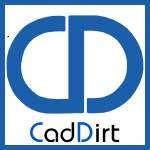Using Sketches to Rip Sheet Metal Parts
/The ability to use sketches to rip sheet metal parts may be one of the most important features, especially when importing solids. The rip feature used to only be able to rip linear edges on the part. However, as you can see in the example to the left, this would not work since the bottom is missing gaps to rip by. Instead of going through the effort of using a complex cut feature to add the gaps you can simply use sketches. This technique will only work if the sketches terminate at verticies on the part. Notice in the example how each of the sketch entities start and end at verticies on the part. The sketches do not need to be separate for each entity either. In this case the four entities are all within one 2D sketch on that bottom face. Now you are ready to insert your bends! First, you select the fixed face and then scroll down to reveal the Rip Parameters. and select on the edges and sketches that rips can be added to. It is good practice to make sure the rip edges are sharing verticies so in the example to the
right notice how the sketch entity and the model edge are setup. Selecting the inside edge may cause issues when trying to perform a rip like this. Now you can flatten your part properly without having to perform a ton of preprocessing procedures. ~Lou


